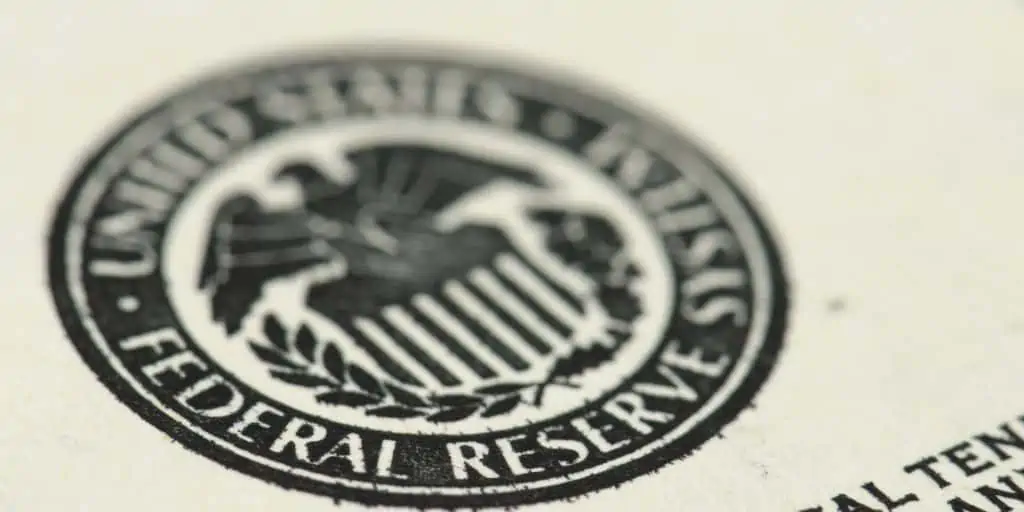What Is the Secured Overnight Financing Rate (SOFR)?
REtipster does not provide tax, investment, or financial advice. Always seek the help of a licensed financial professional before taking action.
Shortcuts
- The Secured Overnight Financing Rate (SOFR) is a benchmark rate determining the cost of overnight borrowing secured with Treasury notes.
- This rate is replacing the London Interbank Offered Rate (LIBOR), which aggravated the financial crisis of 2008.
- SOFR is a much more robust system since it is more transparent and it relies on transaction data, not bank estimates (as seen with LIBOR).
- Knowing the SOFR is important in the financial and lending industries since it indirectly influences the interest rate of financial products (such as loans and bonds) in the market.
An Overview of SOFR
The Secured Overnight Financing Rate (SOFR) is a benchmark interest rate that measures the cost of overnight borrowing using U.S. Treasury bonds as collateral[1]. The U.S. financial market is transitioning to using SOFR instead of LIBOR as a benchmark rate for many financial products, such as bonds, loans, and others.
The Federal Reserve Bank of New York (FRBNY) calculates SOFR at the start of every business day. It uses three types of data[2]:
- Tri-party repurchase agreement (“repo”) data.
- General collateral finance repo agreements transaction data.
- Bilateral Treasury repo transactions cleared through the FICC Delivery vs. Payment Service.
The New York Federal Reserve takes the volume-weighted median of transactions in these markets to compute the SOFR. It publishes the rate on its website around 8:00 a.m. ET each business day.
To understand why the secured overnight financing rate influences the interest rates of many products in the market (and generally why it ultimately influences the prices of goods and services), it is important to know what overnight borrowing is.
What Is Overnight Borrowing?
Overnight borrowing refers to the practice of borrowing funds for a short span of time, typically one day or overnight (hence the name).
Overnight loans are important because, in the course of a day, a bank’s cash on hand may fluctuate due to the actions of its depositors. For example, one bank may have a surplus of cash because account holders deposited more money than they withdrew, while another may have a shortage of cash because its depositors did the opposite.
To meet regulatory reserve requirements, banks of the latter type will usually resort to overnight borrowing. The Federal Reserve mandates the minimum amount or percentage of cash banks should have in reserve so they can serve the demands of their depositors and help prevent a “run on the bank” scenario, where everybody runs to their nearest bank to withdraw money[3].
In overnight borrowing transactions, one party lends funds to another for a specified period, usually one day. The lender typically requires collateral, such as government bonds, to secure the loan.
The interest rate charged on overnight borrowing is known as the overnight borrowing rate. The Secured Overnight Financing Rate is one index that influences the overnight rate.
The overnight borrowing rate indirectly influences the interest rate of many financial products. This is because when an overnight rate rises, financial institutions with a shortfall of cash need more money to settle their overnight obligations. To compensate, they tend to increase their rates on the loans they lend to customers[4].
Why SOFR Is Replacing LIBOR
SOFR is replacing the London Interbank Offered Rate (LIBOR) due to several reasons. One of the most widely circulated is LIBOR’s role in the Great Recession, which prompted the New York Fed and the Treasury Office of Financial Research (OFR) to design and implement SOFR in 2017[5].
SOFR is also a more robust benchmark and less risky, according to the FRBNY. Some reasons for this include[6]:
- Its basis is an active market with a wide range of lenders and borrowers, which makes SOFR difficult to manipulate.
- SOFR is based on transactions, not bank estimates.
- There is transparency in its calculation.
- SOFR complies with international best practices.
- This rate covers numerous market segments, resulting in significant volumes of transactions that arise from varying market conditions.
- The market that underlies SOFR has withstood the global financial crisis of 2008.
How Will the Switch to SOFR Affect Existing Loans?
The switch to SOFR from LIBOR is expected to have a relatively limited effect on most borrowers. However, those with LIBOR-based home equity loans, adjustable-rate mortgages, or reverse mortgages, need to confirm with their lenders how their rate is determined exactly[7].
In any case, two factors may influence the impact of the shift to SOFR on mortgage borrowers, namely[8]:
- The ability of lenders to adjust their instrument’s reference date to play on their rates, either by targeting those days when higher SOFR volatility is expected or using different smoothing periods.
- The lenders’ willingness to adjust their reference date to take advantage of the higher rates.
Regulators and consumers should watch if lenders may be manipulating their timing to gain more favorable interest rates. Such timing could also be used to target the public, particularly the less informed borrowers.
SOFR Counterparts in Other Countries
LIBOR is widely used worldwide, but the financial crisis of 2008 and the subsequent transition of the United States to another benchmark have prompted other countries to follow suit. As a result, LIBOR usage is declining.
Not all countries are planning to use SOFR, though. Other countries project to adopt other benchmark rates that make more sense for their financial market.
Some examples of these rates include the following:
- Sterling Overnight Index Average (SONIA). The U.K., through the Bank of England, has started usage of this benchmark as an alternative to LIBOR since April 2016[9].
- Tokyo Overnight Average Rate (TONAR). The Bank of Japan introduced this reference rate in 2016 to support the transition of yen loans away from LIBOR[10].
- Swiss Average Rate Overnight (SARON). The stock exchange operator SIX, in conjunction with the Swiss National Bank, developed this reference rate in 2009, and SIX has administered it since then[11].
Sources
- Federal Reserve of New York. (n.d.) Secured Overnight Financing Rate Data. Retrieved from https://www.newyorkfed.org/markets/reference-rates/sofr
- Chatam Financial. (n.d.) SOFR: A comprehensive guide. Retrieved from https://www.chathamfinancial.com/insights/sofr-end-users-guide
- Manfull, Q. (2022.) Should You Be Worried About A “Run on the Bank?” Masterworks. Retrieved from https://insights.masterworks.com/finance/should-you-be-worried-about-a-run-on-the-bank/
- Chen, J. (2022.) Overnight Rate (Federal Funds Rate): Definition and How It Works. Investopedia. Retrieved from https://www.investopedia.com/terms/o/overnightrate.asp
- Marquit, M., Curry, B. (2021.) SOFR Is Coming: What Is The Secured Overnight Financing Rate? Forbes. Retrieved from https://www.forbes.com/advisor/investing/secured-overnight-financing-rate-sofr/
- Martin, K.A., Sagan, M. (2021.) SOFR Fundamentals: What We Know So Far. McMillan. Retrieved from https://mcmillan.ca/insights/sofr-fundamentals-what-we-know-so-far/
- Wichter, Z. (2020.) New Index for Adjustable Mortgages, Home Equity Loans May Change Your Payment. Bankrate. Retrieved from https://www.bankrate.com/mortgages/libor-to-sofr-index-change-is-underway-for-helocs-arms-reverse-mortgages/
- West, C. (2021.) The LIBOR Transition, Part 4: Consumer Protections as LIBOR Ends. Summit. Retrieved from: https://www.summitllc.us/blog/libor-transition-consumer-protections
- Bank of England. (n.d.) SONIA Key Features and Policies. Retrieved from https://www.bankofengland.co.uk/markets/sonia-benchmark/sonia-key-features-and-policies
- Mitsubishi UFJ Financial Group. (2021.) MUFG executes its first bilateral TONAR loan. Retrieved from https://www.mufgamericas.com/who-we-are/news/mufg-executes-its-first-bilateral-tonar-loan
- Credit Suisse. (n.d.) SARON Mortgages. Retrieved from https://www.credit-suisse.com/ch/en/private-clients/mortgages/saron-hypothek.html










